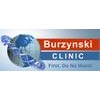Antineoplastons A10 and AS2-1 In Patients With Carcinoma of the Bladder
Stage IV Bladder Cancer

About this trial
This is an interventional treatment trial for Stage IV Bladder Cancer focused on measuring recurrent bladder cancer
Eligibility Criteria
Inclusion Criteria: Histologically confirmed stage IV bladder carcinoma that is unlikely to respond to existing therapy and for which no curative therapy exists or stage IV newly diagnosed, incurable bladder carcinoma Measurable disease by CT scan Tumor must be greater than 2 cm at the largest diameter for the lymph nodes located in the head, neck, axillary, inguinal, or femoral areas and at least 0.5 cm in the largest diameter for other localizations 18 and over Karnofsky 60-100% Life expectancy: greater than 2 months WBC at least 2,000/mm^3 Platelet count at least 50,000/mm^3 Bilirubin no greater than 2.5 mg/dL SGOT/SGPT no greater than 5 times upper limit of normal No hepatic failure Creatinine no greater than 2.5 mg/dL No history of renal conditions that contraindicate high dosages of sodium No severe heart disease No uncontrolled hypertension No history of congestive heart failure No history of other cardiovascular conditions that contraindicate high dosages of sodium No severe lung disease Not pregnant or nursing Fertile patients must use effective contraception during and for 4 weeks after study participation No serious active infections or fever No other serious concurrent disease At least 4 weeks since prior immunotherapy and recovered No concurrent immunomodulating agents At least 4 weeks since prior chemotherapy (6 weeks for nitrosoureas) and recovered Concurrent corticosteroids allowed At least 8 weeks since prior radiotherapy and recovered Recovered from any prior operative procedure Prior cytodifferentiating agent allowed Exclusion Criteria: - Prior antineoplaston therapy
Sites / Locations
- Burzynski Clinic
Arms of the Study
Arm 1
Experimental
Antineoplastons
Antineoplaston therapy (Atengenal + Astugenal) by IV infusion every four hours for at least 12 months. Study subjects receive increasing dosages of Atengenal and Astugenal until the maximum tolerated dose is reached.
Outcomes
Primary Outcome Measures
Secondary Outcome Measures
Full Information
1. Study Identification
2. Study Status
3. Sponsor/Collaborators
4. Oversight
5. Study Description
6. Conditions and Keywords
7. Study Design
8. Arms, Groups, and Interventions
10. Eligibility
12. IPD Sharing Statement
Learn more about this trial
